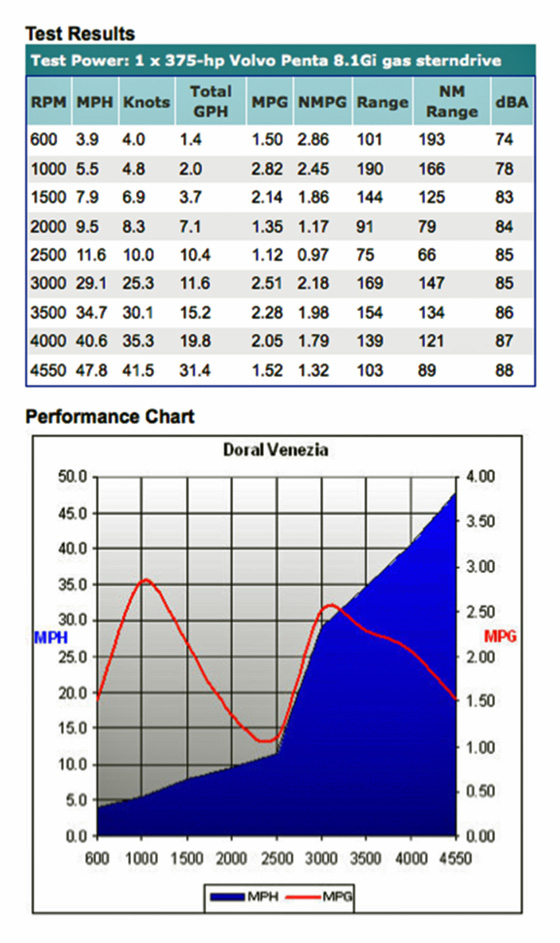VOLVO PENTA 8.1L FUEL EFFICIENCY
01 February 2013 00:00 Filed in: Boating
Smaller engine is more fuel efficient … really?
Let's take (RPMs) x (displacement cc) x (throttle opening %) at a given RPM and you get a fuel consumption number. So, of course, a 6.2L will consume less at 3000 RPM than a 8.1L at 3000 RPM, or at any other given RPMs with all else being equal.Now let's consider the performance of a boat equipped with either engine …
The consensus as expressed on the Chaparral Boats forum and in BoatTest tests is that the pre-2010 Chap 270 Signature and similar boats with 8.1L engine cruises at around 30-32 MPH turning at 3100 RPMs burning 12-13 GPH.
Trailer Boats magazine article tested a 2009 SeaRay Sundancer 270 with a Merc 6.2 Bravo III setup. The SeaRay 270 is very close in size and weight to a 2008 Sig 270. Cruising at speed of 31 MPH, the SeaRay 270 with 6.2L needed to spin at 4000 RPM and burned 14.8 GPH. The similar test results can be found on BoatTest site.
So, the small block (6.2L) ran 29.0% faster while its displacement is 76.5% of the big block (23.5% cc less than 8.1L). Therefore the 6.2L burns more fuel than the big block (8.1L) at the same speed over water under these particular conditions.
This is not a comprehensive, empirical calculation, just an indicative factor that the 8.1L engine can be as fuel efficient, or more efficient than 6.2L engine under comparable conditions.
In conclusion
It all depends on how you use your boat and engine, and you have to find your boat's sweet spot. Let’s look at the real world results based on BoatTest.com test done on 2010 Doral Venezia boat.
Click on the image to view the entire test results page.
Worth noting is the hallmark of this Volvo Penta 8.1L engine ... it is equally very efficient in two ranges, in 1000-1100 RPM and in 3000-3100 RPM. In both ranges the engine achieves 2.5 MPG or better mileage.
I do 80% of my boating in these two ranges. With the F4 props my VP 8.1L engine tends to be most efficient when operated in the upper limit of these two ranges.
If one has to drop from 3000 RPM to 2500 RPM or 2000 RPM, one will be getting only half or less of that mileage. If one needs to go the distance, it's more efficient to go at 3500 RPM than 2500 RPM since one will get twice as many MPG at 3500 RPM than at 2500 RPM.
Note: the MPG is a better indicator of fuel efficiency for a particular boat and engine than the GPH which is fuel usage indicator under particular conditions or an averaged fuel usage over time.
I do 80% of my boating in these two ranges. With the F4 props my VP 8.1L engine tends to be most efficient when operated in the upper limit of these two ranges.


